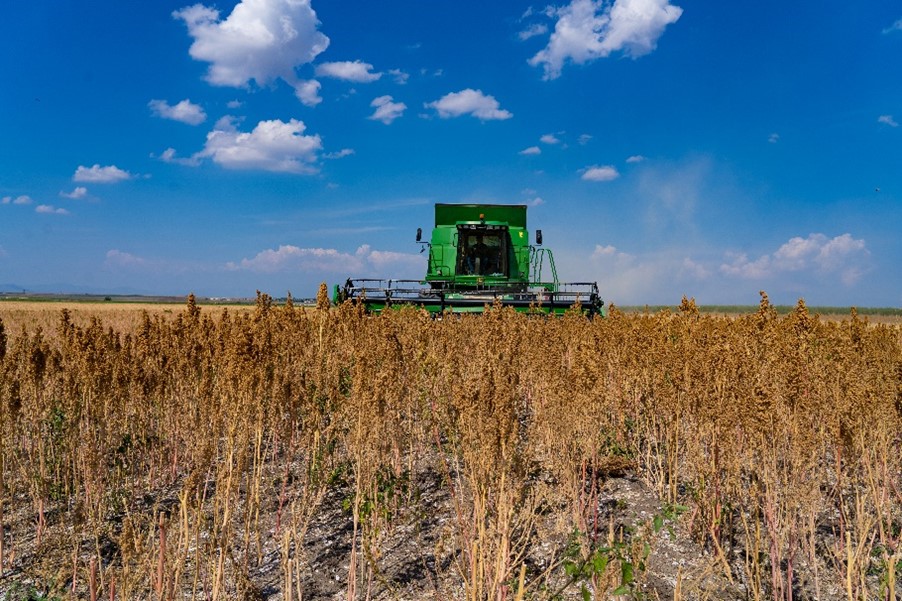
Quinoa is gaining more and more ground in European markets. It is a crop that originated in Latin America, and the oldest records refer to its consumption by indigenous peoples of Peru and Bolivia as early as 4,000 years ago.
Quinoa is a highly nutritious, gluten-free, pseudo-grain alternative. One of the most important points in the process of spreading quinoa to the rest of the world was the declaration of 2013 as the “Year of Quinoa” by the United Nations.
“Since then, its demand has recorded a continuous upward trend, especially in the EU member states”, Ioana Kakapoukis, Assistant Professor of Agriculture and Innovative Crops at the Agricultural University of Athens (GPA), told APE-MPE. “But due to its excellent nutritional value, quinoa can also contribute to the EU’s environmental goals”.
In addition to its excellent nutritional value, it can help achieve the goals of the European Green Deal
Mrs. Kakabuki, PhD candidates Mr. Antonio Mavroidis and Mr. Together with his research team, Panteleimon Stavropoulos, explores better farming methods and hopes that quinoa cultivation in large areas will soon compete with other traditional grains. Many springs.
A region of Thessaly was selected where the climate was favorable for the growth of the crop in question.
“For the last few years we have been working with the private sector in the Thessaly region with this particular crop and we have identified and developed the needs of the crop under Greek conditions,” said Ms Kagabouki. It will be a big step towards reducing the environmental footprint of Greek agriculture and will bring us closer to achieving our green goals”.
European Green Deal
As the effects of climate change become increasingly apparent, the commission designed a series of agro-environmental measures to manage the climate crisis and ensure food insecurity.
The “European Green Deal” is one of the most important strategies of the European Union, especially the “Farm to Fork” framework that wants to reduce the use of agrochemicals by 20-50% by 2030.
Alongside these initiatives, the research community is focusing on how to reduce inputs to the primary sector while maintaining the production dynamics of modern farming systems. One of the most promising solutions is the adoption of innovative, alternative xeric and low-input crops such as quinoa.
“The case of quinoa is typical of how the introduction of new crops can achieve the goals of the Green Deal. Initially, the plant’s adaptability to conditions unfavorable to other crops and its low requirements for fertilizer and irrigation meet the terms of the agreement,” added Ms. Kakabuki, adding, “According to the literature, satisfactory yields are possible. The country, combined with the high nutritional value of the seed, makes us optimistic about the production and economic dynamics of quinoa in Greece”.
Quinoa in Europe
The European Union imports large quantities of quinoa from the main producing countries of Peru, Bolivia and Ecuador. Despite fluctuations in supply and trade prices, import volumes have proven stable over the past five years, with only a slight decline in 2018, and still room for future growth.
According to official data, the total European import of quinoa in 2019 was 28 thousand tons.

. “Professional creator. Subtly charming web advocate. Unapologetic problem solver. Devoted student.”





More Stories
Criminal gang in Mykonos encouraged women into prostitution – how they set up romantic dates
Earthquake in Kavtos: “Too early to decide if it’s significant” – Valleys closed, risk of landslides
Halkidiki – Luna Park: SKAI Revelation – Discovered by the Expert